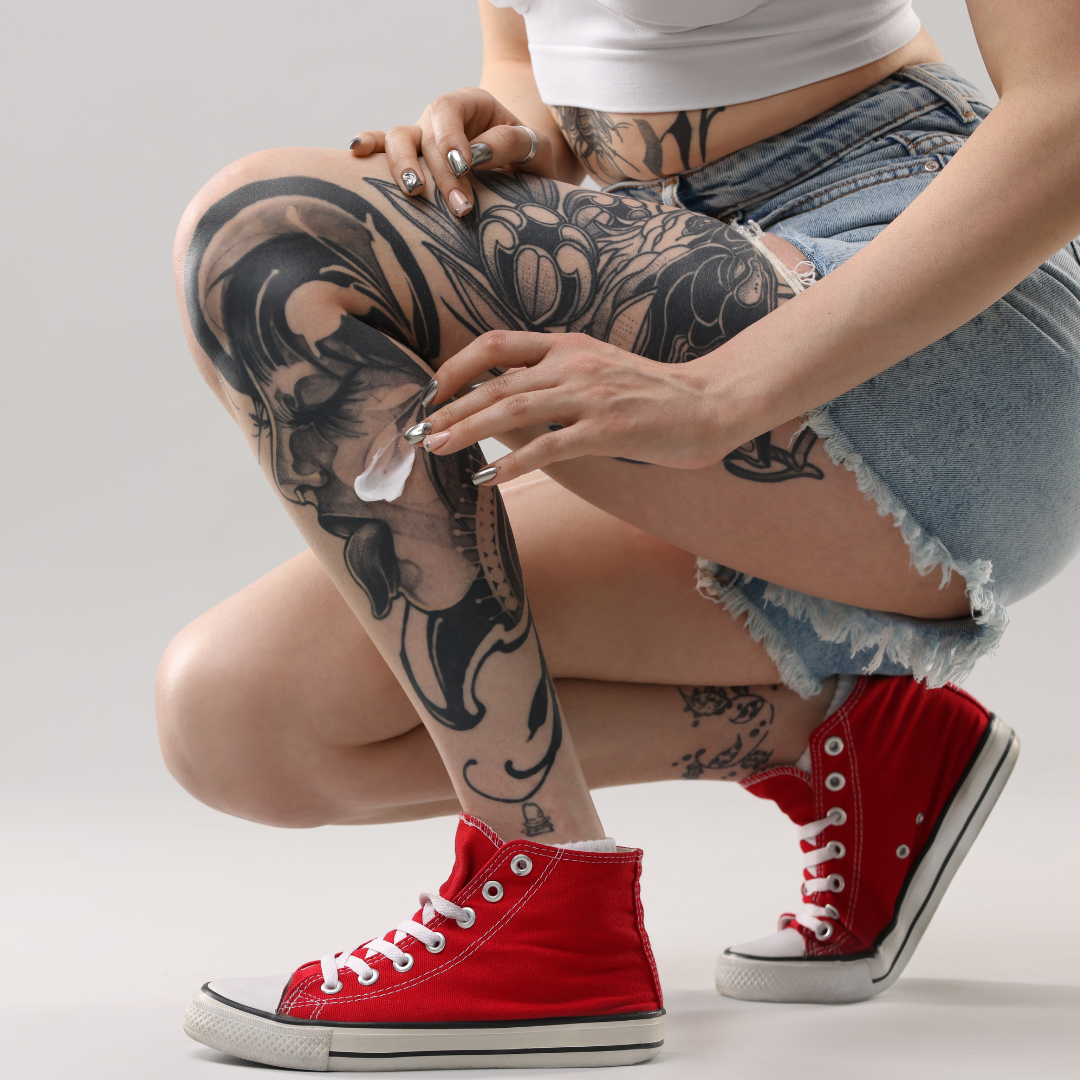The Biological Process of Tattoo Healing: Why Tattoos Fade and Blur Over Time
When you get a tattoo, it’s easy to focus on the excitement of the design and the experience. But once the ink settles, it’s important to understand what happens next. Tattoos heal through a natural biological process, and over time, the ink can fade or blur due to a variety of factors.
In this blog, we’ll break down the science behind how tattoos heal, why they fade, and what you can do to keep your tattoo looking fresh and sharp for years to come.
How Tattoos Heal: The Biology Behind It
A tattoo is a permanent piece of art created by injecting ink into the skin using a needle. But how does your body respond to this process? The skin’s response involves several stages, and understanding each one can give you a better idea of why tattoos heal the way they do.
The Skin Layers and Tattooing
To understand tattoo healing, we first need to understand the skin. The skin has three main layers:
Epidermis (outermost layer)
Dermis (middle layer)
Subcutaneous (deepest layer)
Tattoo needles puncture through the epidermis and deposit ink into the dermis, which is where the ink must stay to create a permanent tattoo. This layer is more stable than the outer epidermis, which sheds skin cells frequently, and ensures the tattoo doesn’t wash away over time.
Tattoos that go as deep as the subcutaneous tissue are where you see blowouts happen. This tissue is not structured dense enough to hold the ink, causing the dreaded spread or blur effect.
The Initial Healing Phase (1-2 Weeks)
Once the tattoo is done, your body treats it like a wound. The healing process starts almost immediately:
Inflammation: Your body sends blood to the tattooed area to begin the healing process, causing redness, swelling, and mild pain. This inflammation can last for the first few days.
Scabbing: As the skin starts to repair itself, the tattooed area may form a slight scab or just a milky, dull top layer. This protects the ink and helps it settle into the dermis. It's crucial to resist the urge to scratch, pick, or peel the tattoo as this can disrupt the healing process and cause the tattoo to lose ink. Excessive scabbing may be a sign the tattoo is overworked, or having a rough heal. Either way, be sure to protect it.
Flaking and Peeling: After a few days, the outer skin layer starts to shed, causing your tattoo to flake and peel. The new skin underneath is soft and vulnerable, and proper aftercare is crucial during this phase to protect the tattoo.
The Long-Term Healing Phase (Up to 6 Months)
Even after the initial healing period, your tattoo continues to heal beneath the surface. The deeper skin layers take time to regenerate, and during this time, the ink in the dermis begins to settle. This phase can last several weeks to months, during which you may notice slight fading as the ink adjusts and becomes embedded within the dermis.
Healing Tip: Keep your tattoo moisturized and protected from direct sunlight during the healing period to ensure the best possible results.
Why Tattoos Fade and Blur Over Time
While tattoos are designed to be permanent, several factors contribute to their gradual fading or blurring over time. Let's dive into the reasons behind this process:
Ink Breakdown and Skin Regeneration
The tattoo ink itself doesn’t disappear, but your skin’s natural processes can affect how the tattoo looks over time. The body treats tattoo ink as a foreign substance and begins to break it down. The ink particles are too large for your body’s immune cells to completely remove, but they do cause some degree of breakdown, especially in the epidermis.
The process of skin regeneration plays a large part in fading and blurring. Your skin is constantly producing new cells and shedding old ones, which means that over time, the ink particles can move or degrade. As the dermis regenerates, some of the tattoo pigment can disperse or lose sharpness, leading to a faded or blurry tattoo.
Sun Exposure
One of the primary factors that cause tattoos to fade over time is exposure to ultraviolet (UV) rays from the sun. UV radiation breaks down ink particles, leading to quicker fading and loss of vibrancy. Black ink is more resistant to UV damage than lighter colors, but even black tattoos will fade with prolonged sun exposure.
Prevention Tip: Apply sunscreen with a high SPF to protect your tattoos from the sun and help them retain their color longer.
Skin Aging and Movement
As you age, your skin loses elasticity and the layers of skin thicken. This natural aging process impacts how tattoos hold up. Tattoos on areas of the body with more movement, such as joints (elbows, knees), may experience more stretching and distortion, which can blur the lines over time. Tattoos on areas with more friction or less blood flow, like the hands or feet, may also fade faster.
Ink Quality and Tattooing Technique
Not all tattoo inks are created equal. Poor-quality ink or subpar tattooing techniques can lead to faster fading or blurring. If an artist doesn’t inject the ink deep enough into the dermis, the tattoo may not last as long. Similarly, fine lines in tattoos are more susceptible to fading because they use less ink and are more likely to blur as the skin heals and regenerates.
Pro Tip: Choose a skilled tattoo artist who uses high-quality ink and knows how to work with different styles and designs to ensure longevity.
How to Prevent Tattoo Fading and Blurring
While some degree of fading and blurring is inevitable over time, there are steps you can take to preserve your tattoo’s clarity and vibrancy for as long as possible:
Follow Aftercare Instructions: Proper aftercare ensures the tattoo heals well and minimizes scarring. Always follow your tattoo artist’s advice for cleaning, moisturizing, and protecting your tattoo during the healing period.
Use Sunscreen: Protect your tattoo from UV rays by applying a broad-spectrum sunscreen with a high SPF.
Stay Hydrated: Healthy, hydrated skin heals better and holds ink more effectively.
Avoid Scratching or Picking: Never pick or scratch your tattoo as this can cause damage to the design and lead to ink loss.
Choose the Right Placement: Tattoos on areas that receive less wear and tear tend to hold up better over time.
Understanding Tattoo Fading and Blurring
Tattoos are a beautiful and lasting form of self-expression, but like all things, they’re subject to the natural processes of the body. Understanding how tattoos heal and why they fade or blur over time can help you make informed decisions about your tattoo. By following proper aftercare, choosing the right artist, and protecting your tattoo from the sun, you can keep your artwork looking fresh for years to come.
Sources
UCSF Synapse – Why Tattoos Stay Put: https://synapse.ucsf.edu/articles/2024/05/28/why-tattoos-stay-put
National Center for Biotechnology Information – Tattoo Ink Nanoparticles in Skin Tissue and Fibroblasts: https://pmc.ncbi.nlm.nih.gov/articles/PMC4464189/
Wikipedia – Process of Tattooing: https://en.wikipedia.org/wiki/Process_of_tattooing
Byrdie – What Causes Tattoos to Fade? Experts Explain How to Avoid It: https://www.byrdie.com/tattoo-fade-8628678






